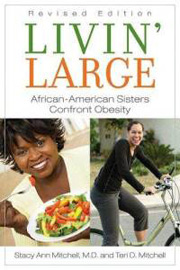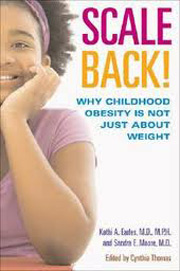|
Download Music & Healthy Kids

CHILDREN’S DAY (CHILDREN AND HEALTH)
CULTURAL RESOURCES
Sunday, October 16, 2011
(See the attached PDF that contains a great article by physician John Clarke and Elizabeth Clarke on the use of Hip Hop to help kids stay and get healthy. Music is a powerful teaching tool.)
Anne E. Jenkins, Guest Lectionary Cultural Resources Commentator
Christian Educator, Assistant Professor, Spirituality/Health Researcher, and Associate Minister at Shiloh Baptist Church in Winston-Salem, NC
I. History
The church is continuously rededicating itself to serving the needs of its families and communities, particularly as the needs relate to increasing life expectancy and improving the quality of life for all its members. Commanding special attention today is the epidemic of childhood obesity. Obesity is a term used to describe body weight that is much greater than what is healthy. If you are obese, you also have a much higher amount of body fat than is healthy. A person is considered obese when his or her weight is 20% or more above normal weight in proportion to his or her height and gender. The body mass index (BMI), the ratio of weight to height, is used to determine if a person is at normal weight, underweight, or overweight. For children, overweight is defined as a BMI at or above the 95th percentile of gender-specific BMI for age growth charts. Childhood obesity increases the risk of obesity in adulthood; however, parental/caretaker involvement, which affects the chances of a child’s becoming an obese adult, is complex.1
From 2003 to 2004 approximately 13.9% of 2–5-year-old children, 18.8% of 6–11-year-old children, and 17.4% of 12–19-year-old children were overweight in the United States.2 Rates among minority children and adolescents are nearly 50% higher than those in the Caucasian population. The prevalence of being overweight had increased to 21.5% in African American children and 21.8% in Hispanic children, whereas the prevalence in Caucasian children had increased to a rate of 12.3%. Of these minority groups, girls are disproportionately affected compared with boys. In addition to the disparity of excess weight within the minority pediatric population, children residing in impoverished communities are more overweight than their economically advantaged peers.3 Obesity is a leading modifiable risk factor for early death, type 2 diabetes, heart disease, cancer, sleep apnea, musculoskeletal disorders, and physical limitations, as well as associated psychosocial concerns.4
An article covering 40 years of research titled “Getting Worse: The Stigmatization of Obese Children” reports on a study of the stigma attached to childhood obesity to see what effect this increased prevalence has had on those being stigmatized. About 500 fifth and sixth grade public school students were asked to rank six drawings of same-sex children with obesity, various disabilities, and those who were healthy (no disability), in order of how well they liked each child. The results of this study showed the participants liked the drawing of the obese child significantly less than the other drawings. The students ranked the drawing of the healthy child significantly higher than the other children depicted in the drawings. The most critical finding of this study was that children were most strongly biased against the obese child and that this bias continues to get even stronger.5 The early stigmatization of obese children may account for their lower self-esteem and greater shame, humiliation, and perceived and actual teasing compared with their non-obese peers. Twelve to sixteen-year-olds who are obese are often the victims of repeated group aggression, or “mobbing.” Here parental or caregiver awareness becomes crucial.
Unlike adults, children who are obese are mostly unaware of their health plight. Their parents and caregivers exert influence over their eating and exercise choices. Parents and caregivers may not initiate preventive changes unless they first perceive that their child is at risk for some adverse health outcome. Efforts to prevent obesity will have to change caregivers’ attitudes and behaviors in order to impact the eating and activity patterns of their children.
Caregivers of obese African American 5–10-year-old children were asked whether their child’s weight was perceived to be a health risk. Despite almost 70% of the children being obese, only 44% of caregivers perceived the child’s weight to be a health problem.6 African American women, generally the primary caregiver in their ethnic community, are more tolerant of larger body size and less likely to be dieting.
Getting caregivers interested in taking steps to prevent obesity or obesity-related chronic diseases in their children will involve educating them about the health risks associated with childhood obesity and making the connection between childhood obesity and early onset type 2 diabetes. In order to capture the attention of African Americans, these messages will need to be made culturally sensitive. Parents and caregivers must realize that childhood obesity is not a character flaw of the child, nor is it always a failure in parenting. There are social, economic, and environmental factors that influence family lifestyle and add fuel to this epidemic. The church must make childhood obesity a priority. The ultimate goal is to encourage parents and caregivers to adopt behaviors that will prevent obesity and weight-related diabetes in this high-risk population.
II. Songs That Speak to the Moment
This Is the Way We Wash Our Hands
This is the way we wash our hands
Wash our hands
Wash our hands
This is the way we wash our hands
To keep our bodies healthy
This is the way we eat good food
Eat good food
Eat good food
This is the way we eat good food
To keep our bodies healthy
This is the way we..........
(Have the children name other things they can do to keep healthy and include them in the song.)
Now the Day Is Over
These lyrics can bring comfort to children who have been teased or abused because of being obese. Caretakers need to be aware that children and adolescents can be psychologically damaged by their peers, both at school and in the church. A few words of encouragement can bring some comfort.
Now the day is over,
Night is drawing nigh,
Shadows of the evening
Steal across the sky.
Now the darkness gathers,
Stars begin to peep,
Birds, and beasts and flowers
Soon will be asleep.
Jesus, give the weary
Calm and sweet repose;
With Thy tenderest blessing
May mine eyelids close.
Grant to little children
Visions bright of Thee;
Guard the sailors tossing
On the deep, blue sea.
Comfort those who suffer,
Watching late in pain;
Those who plan some evil
From their sin restrain.
Through the long night watches
May Thine angels spread
Their white wings above me,
Watching round my bed.
When the morning wakens,
Then may I arise
Pure, and fresh, and sinless
In Thy holy eyes.
Glory to the Father,
Glory to the Son,
And to Thee, blest Spirit,
While all ages run.7
Additional Music for This Day on the Calendar
See the Health Rock website at www.HealthRock.com for fun songs that children can sing at home and can be taught in Sunday School, Vacation Bible School, and camps.
A website for older children and teens, www.healthhopmusic.com includes CDs featuring songs written by Dr. John D. Clark, a board certified family physician. His CDs cover topics such as asthma, allergies, diabetes, sickle cell anemia, etc. The site uses hip hop to help children get and stay healthy. It’s a great teaching website. Also see the special attachment which contains an article by Dr. Clarke and Elizabeth Clark on the use of Hip Hop to help teens stay and get healthy.
III. Cultural Response
Twenty-five years of my teaching experience has been in inner city public schools located in the lowest socio-economic areas. During this time it was customary for me to take my elementary classes for a three-day trip to New York City annually. Part of preparing the students for the physical exertion of walking quickly and keeping up with the group was to have the students do sprints around the school playground and complete accelerated walks around the sidewalks surrounding the school. One-third of the class was quite overweight and frequently complained about the increased activity. Two parent conferences were held; the first was an information session on dates, cost, itinerary, as well as chaperone expectations. The accompanying adults (chaperones) had to be in good health and demonstrate physical stamina, problem-solving skills, and some experience with children (particularly third graders). Chaperones were encouraged to participate in our daily preparation activities for the next three months.
Initially, many parents who volunteered thought this experience was just another field trip, but they found out quickly that it wasn’t as simple as getting on the bus to New York City. I would estimate that 75% of the caregivers of my third grade class were clinically obese. The caregivers wanted to go to New York but they were not used to moving quickly, nor were they excited about participating in the preparation activities for the trip.
On reflection, I realize that doing the trip and having students and parents exercise before the trip accomplished several goals:
- Historical studies about the Statue of Liberty, Ellis Island, Harlem, Central Park, and the Empire State Building became lived experiences for the students;
- The students, including the obese ones, were highly motivated to do everything they could to improve their chances of going to New York City;
- Preparation was a time for integrating healthy living skills, focusing on nutritional education and physical activity and practicing well-being;
- An unexpected but wonderful result was that the students carried the information and exercises over into their homes, soliciting parent involvement regarding healthy meal planning and after-school activites. Other behaviors changed drastically also, such as food choices and patronizing grocery stores in other communities to get better prices and fresher products.
The caregivers who wanted to be chaperones began showing up more frequently during our trip preparation activities. They too were eager to convince me that as caregivers they could do everything that I requested of them. My students became more competitive when the parents/caregivers participated. By the end of the three-month prep time, no complaints were voiced, everyone’s stamina had improved greatly, and more students making healthy food choices was noted by the cafeteria staff.
No official records were kept during these many years (in hindsight, I wish I had), but the lifestyle changes that occurred in that third grade class continued. I went to as many high school graduations as I could for students who had gone on that New York trip. They all looked good and so did their parents. Thanks be to God.
IV. Audio Visual Aids
1. For a Children’s Service that focuses on HEALTH, display images of people with various diabetes-related disorders; for example, diabetic blindness, lower extremity amputations, lymphodema, etc. This is hard to view but effective.
2. Display images of African American families with obese members and have children discuss this. Be sensitive to obese children in your church. The images are intended to educate and empower, not harm.
3. Show life expectancy charts for various ethnicities, highlighting African Americans.
4. Let the children in your church do a character analysis of the movie “The Nutty Professor I.” Have them discuss the pros and cons of being obese and thin.
5. Use Fat Albert cartoons as they offer opportunities to discuss peer relationships.
V. Books to Facilitate a Memorable Learning Moment

|
Stacy Ann Mitchell, M.D. and Teri D. Mitchell. Livin’ Large: African-American Sisters Confront Obesity. Keep the women in your congregation physically fit as well as spiritually fit. This eye-opening book by sisters Stacy Ann Mitchell, M.D. and Teri D. Mitchell explores the issue of obesity, which afflicts 65% of African American women, and offers practical advice for controlling weight and staying healthy. |
 |
Kathi A. Earles, M.D., M.P.H., and Sandra E. Moore, M.D. Edited by Cynthia Thomas. Scale Back! Why Childhood Obesity Is Not Just about Weight. African American parents can learn how to help their children fight obesity with the techniques and recipes presented in this handbook. Based on the dramatic increase in the numbers of obese African American children in the last 15 years, these constructive strategies teach children how to replace overeating and junk food with exercise and nutritional sustenance. A section on the basics of good nutrition and healthy eating habits includes more than 25 delicious low-calorie recipes and teaches children the positive benefits of proper nutrition. Clear, focused, and compassionate, this program for achieving and maintaining good health helps parents help children—and themselves—reverse the trend toward obesity in favor of healthier lives at healthier weights. |
Notes
1. Whitaker, R., Wright, J., Pepe, M. “Predicting Obesity in Young Adulthood from Childhood and Parental Obesity.” New England Journal of Medicine (1997). Volume 337. Number 13.
2. Bungum, T., Satterwhite, M., Jackson, A. W., Morrow, J.R. and Skerett, Greenland, and VanItallie Manson. “The relationship of body mass index, medical costs, and job absenteeism.” American Journal of Health Behavior (2003): 456–462.
3. Laitinen J, Power C, Jarvelin MR. “Family social class, maternal body mass index, childhood body mass index, and age at menarche as predictors of adult obesity.” American Journal of Clinical Nutrition (2001): 287–294.
4. Ogden, C.L., Carroll, M.D., Curtin, L.R., McDowell, M.A., Tabak, C.J., & Flegal, K.M. “Prevalence of Overweight and Obesity in the United States 1999–2004.” Journal of the American Medical Association (2006): 1549–55.
5. Latner, Janet D. and Stunkard, Albert J. “Getting Worse: The Stigmatization of Obese Children.” Obesity Research (2003): 452–456.
6. Young-Hyman, D., Herman, L., Scott, D., Schlundt, D. “Care giver Perception of Children’s Obesity-Related Health Risk: A Study of African American Families.” Obesity Research (2000): 241–248.
7. Baring-Gould, Sabine. “Now the Day Is Over.” National Baptist Publishing Board. New National Baptist Hymnal. Nashville, TN: National Baptist Pub. Board, 1977.
| 
